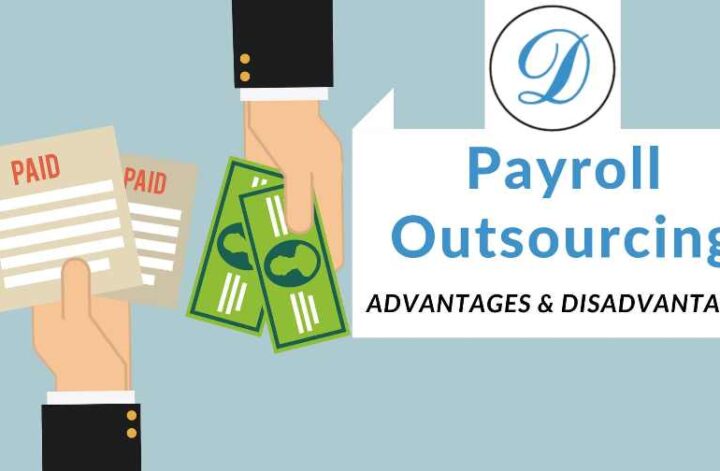Payroll management can be a time-consuming task. Payroll outsourcing allows companies to hire a third-party service to handle these duties, potentially leading to cost savings and access to payroll expertise. However, there are also challenges and risks to consider. This guide explores the ins and outs of Outsourcing payroll in 2024, helping businesses decide if it’s the right strategy for them.
What is Payroll?
Payroll goes beyond simply issuing checks. It encompasses a variety of tasks, including:
- Integrating new employees into the payroll system
- Setting up automatic payments and direct deposits
- Tracking employee hours
- Calculating wages owed
- Distributing pay stubs
- Managing tax-related information
Payroll can refer to both a company’s list of employees to be paid and the total amount of wages and salaries owed. In today’s business world, “payroll” most often refers to the process of paying employees or the entities responsible for it.
What is Outsourcing?
For most of the 20th century, companies aimed to control all business functions. However, by the late 1980s, many realized the value of outsourcing – hiring external companies to perform tasks previously done in-house. This strategy can lead to cost savings, especially when leveraging a global workforce with lower labor costs.
Outsourcing Payroll
Traditionally, companies outsourced low-skill tasks. Today, many outsource critical functions like customer service and payroll. Payroll outsourcing allows a trusted third party to manage sensitive information and company funds. While this may have seemed unthinkable in the past, many payroll tasks are routine and follow established guidelines.
Payroll Co-sourcing
Payroll co-sourcing is a hybrid model where some payroll functions are outsourced while others remain in-house. This allows companies to retain control over specific areas while still enjoying some outsourcing benefits.
Outsourced Payroll Functions
Many, if not all, payroll functions can be outsourced, including:
- Payroll account setup
- Payment method setup
- Time tracking
- Wage calculation
- Pay delivery
- Security measures
- Regulatory compliance
- Tax withholding and deductions
- Payroll tax remittance
- End-of-year tax work
How Payroll Outsourcing Works
Initial Steps
The first step in Outsourcing payroll is deciding on the level of outsourcing desired. Will the company fully outsource, co-source, and if co-sourcing, how will responsibilities be divided? A company may choose to outsource only the tax aspects of payroll, for example.
Arranging Payroll Outsourcing
Numerous domestic and international Outsourcing payroll providers exist. Companies should evaluate providers based on factors like data security, regulatory compliance, and service offerings. Once a provider is chosen, both parties agree on terms of engagement, including specific duties and compensation. Finally, the company shares all necessary information with the provider for them to assume payroll functions.
Making Payroll Happen
Once information and procedures are established, the provider begins its duties. This typically includes distributing pay on a predetermined schedule and withholding applicable taxes before payments are made. Providers typically report to the client regularly, detailing services rendered and performance. The final major component is outsourced end-of-year tax work, including submitting documentation and remitting taxes.
Benefits of Payroll Outsourcing
- Cost Savings
Payroll outsourcing can be more cost-effective than managing payroll in-house. This is especially true if outsourcing to a country with lower labor costs. Even domestically, outsourcing can save money compared to paying “big city salaries” for payroll staff. Consider using free payroll software for additional savings.
- Letting Professionals Do the Work
Payroll providers specialize in effective payroll management, unlike most companies for whom payroll is just an administrative function. These providers have experienced staff, task-specific training, and the necessary software to ensure accurate and efficient payroll processing. Outsourcing payroll can be particularly beneficial for large companies with complex payroll needs.
- Increased Focus on Core Functions
A company’s core business functions are its top priority. Outsourcing payroll reduces administrative distractions, allowing companies to focus on revenue-generating activities and improve overall efficiency.
Disadvantages of Outsourcing payroll
- Less Oversight
Payroll outsourcing means giving up some direct supervision. While a client company can set expectations and monitor the provider’s performance, it has less oversight than with in-house payroll. Choosing a trustworthy provider is crucial, but the client company remains ultimately responsible for employee compensation and any errors created by the provider. Additionally, the client company remains liable for tax remittance, even if outsourced.
- Decreased Data Security
Outsourcing payroll increases the risk of a data breach, as sensitive information like Social Security numbers and bank account information is transferred to a third party. Cloud-based payroll programs use security measures like encryption and firewalls, but they are still targets for malicious activity. When a company keeps payroll data in-house, these risks are generally lower.
Best Practices for Payroll Outsourcing
- Focus on Provider Reputation and Experience: When choosing a payroll provider, take time to research their reputation and experience. Don’t be swayed solely by price; a trustworthy and experienced provider is crucial for minimizing inherent outsourcing risks.
- Remain Aware of Regulations and Tax Burdens: Be aware of employment regulations and tax requirements in the provider’s country, if outsourcing internationally. Don’t assume the provider handles everything – always double-check tax remittance figures to avoid costly errors. The client company remains ultimately liable.
- Take Your Time: Don’t rush into payroll outsourcing. Companies new to outsourcing should take ample time to select a provider and ensure all aspects of the arrangement are understood. Payroll is a critical function, so due diligence is essential.
Bottom Line
Outsourcing payroll offers advantages like cost savings and access to expertise. However, it also comes with challenges like reduced oversight and data security concerns. Companies should carefully weigh the pros and cons and understand their existing payroll management costs before making a decision. By following best practices, companies can leverage payroll outsourcing to achieve greater efficiency and free up resources to focus on core business functions.



